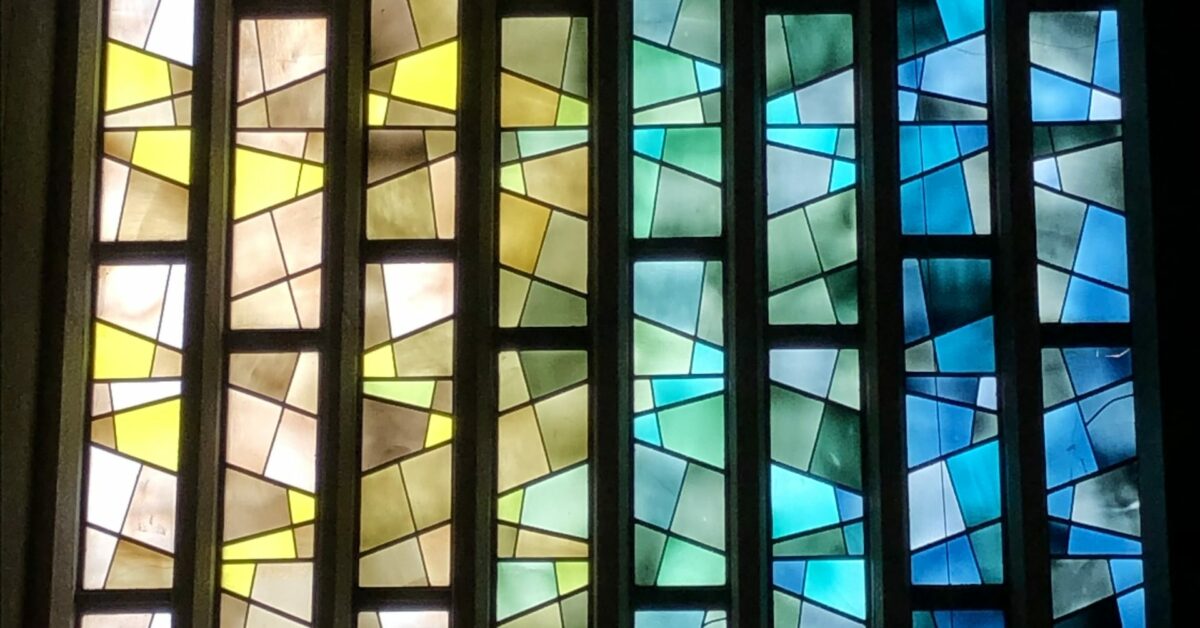Church Tour: Informing and Forming Seekers
Slow Walking Series
This is the second blog post based on my participation in an ecumenical working group associated with Journey to Baptismal Liturgy tasked to adapt the catechumenal process appropriately for those already baptized. One section of “A Guide for Walking with Spiritual Seekers” is a detailed description for leading a “church tour” with two or more baptized seekers wishing to re-connect or connect more deeply with your faith community. For faith formation leaders, the church tour is a way to learn about the seekers and help establish the maturity of a seeker’s faith. At the same time, it is an opportunity to inform (teach) and form seekers.
The “tour” is not modeled on the kind of architecture tour one might experience at a grand cathedral in Europe or a major public building like the US Capitol; rather, it is an interactive “tour” in which the “tour guide” (ideally, according to the Guide, a member of the catechetical team) invites participants to share their experiences of worship. Suggested questions are provided for the various liturgical furnishing, the overall layout of the nave, and for other aspects of the space (windows, processional cross, etc.).
The Guide recommends sharing these goals with the participants prior to the tour (quoted verbatim here):
- To increase your level of comfort in the worship space and with what goes on in our Sunday worship;
- To help you feel more connected with the worshiping community; and
- To point out ways in which our worship space reflects what we believe about God, Jesus Christ, and the people of God, the church.
These goals for the seekers illustrate the dual purpose of information and formation within the catechumenal process, with the third goal functioning to inform and the first two intended to form the seekers, reorienting their lives to the essential gathering of the community, Sunday worship. By walking through the worship space, touching the furnishings, and pointing out specifics, the tour leader’s imparting of information will be more effective than a classroom lecture. The space and furnishings will lead organically into teaching the faith. A triangular-shaped font call for teaching about the Trinitarian name in which the church baptizes; a cruciform font invites teaching based on Romans 6. Formation happens by inviting participants to share their experiences of worship, and the Guide provides examples of questions. Consider first the overall layout of the space, inviting input on these questions:
- What does the space remind you of?
- Does it bring back any memories?
- What objects in the space draw your attention? Why?
After the tour is complete, the group “debriefs” together in a classroom setting. Questions asked here include What did you learn? What surprised you? In worship what draws you into prayer? Participants’ answers will help the tour leader address the two formational goals—increasing seekers’ level of comfort in worship and connecting them to the worshiping community.
The responses of the seekers throughout the tour are intended to help the catechumenal leader(s) to assess the maturity of each seeker’s faith. In a fully developed faith formation process, that assessment will “place” a baptized seeker into one of the “official” stages of the catechumenal process: inquiry, exploration, or intense preparation for baptismal renewal. For those “slow walking” into an adult faith formation process, the tour can be both an interactive teaching tool and a means of assessment to help the leaders shape an appropriate process for the group and individuals within it.
Ultimately, we want Christian disciples to have this understanding about encountering God (quoted verbatim from the Guide): “Although we know that God can be encountered in our homes, in nature, yes, even in pubs and malls and bowling alleys, church buildings are constructed to help us focus our thoughts, words, and prayers on what God has done for us in the person of Jesus Christ.”
+++
Photo: Side chancel window, Jehovah Lutheran Church, St. Paul, Minnesota, 2020
By Rhoda Schuler (permission granted to use the photo with description and attribution)
